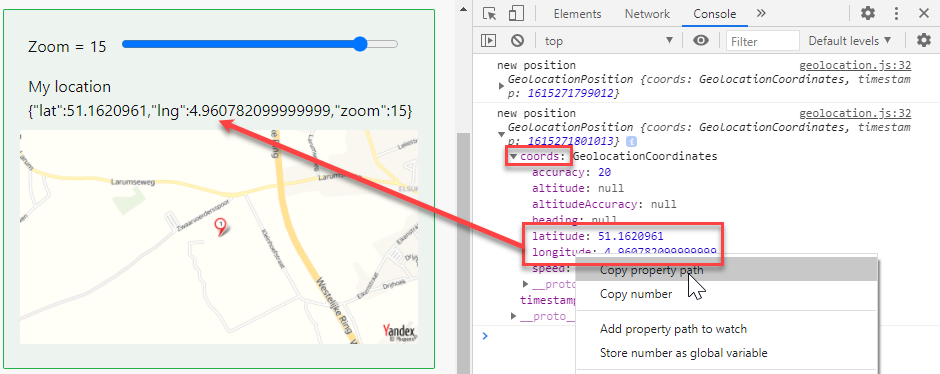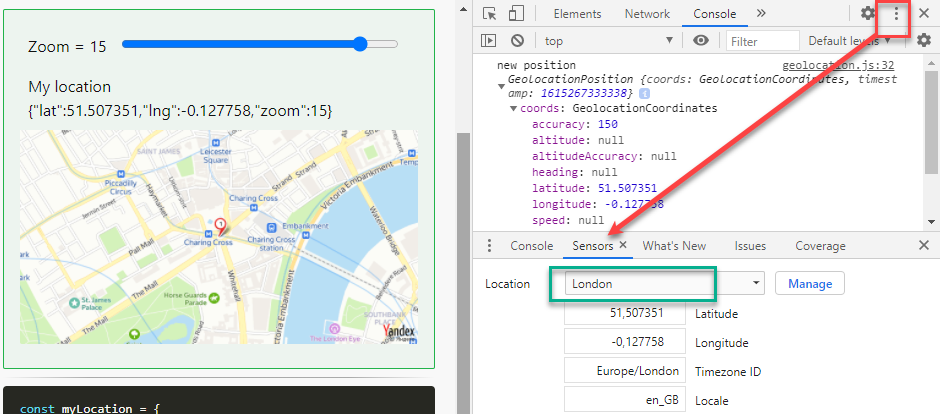# Object literals
- An object literal will be used to combine several related variables into one variable
- This makes your code more readable, easier to maintain and more structured
- Example:
related variables
combined inside an object literal
- We have three variables and one function that are all related to each other
- This is a good candidate to combine all of them into one object literal variable
user
const name = 'John'; const surname = 'Doe'; const age = 41; function greet() { console.log(`Hi, ${name} ${surname}`); } greet();Copied!
1
2
3
4
5
6
7
2
3
4
5
6
7
- Summarised:
- An object literal is a standalone, comma-separated list of name-value pairs, wrapped inside curly braces
- The value of an object variable (or property) can be a string, a number, a boolean, an array, another object, ...
- An object can also contain functions (or methods)
REMARK
- Object literals are standalone objects and are NOT instantiated from a class (classes this will be discussed in a later section)
# Syntax
- Properties inside an object can be written as:
| property | description |
|---|---|
name: 'John' | without quotes (recommended) |
'name': 'John' | with single quotes |
"name": 'John' | with double quotes |
- Functions (or methods) inside an object can be written as:
| function/method | description |
|---|---|
greet() {} | ES6 shorthand (recommended) |
greet: function() {} | as a name-value pair |
# Accessing properties and methods
# Outside the object
- All properties and methods can be accessed with the dot notation
- In our previous example:
| access | description |
|---|---|
user.name | get the name value of the user object |
user.name = 'Jane | set (overwrite) the name value of the user object |
user.greet() | run the greet() function of the user object |
- It's also possible to add and remove properties to/from the object
| access | description |
|---|---|
user.role = 'admin' | add the property role to the user object |
delete user.age | delete the age property from the user object |
# Inside the object
- Functions inside the object can access the properties with the
thiskeyword- Because we use "normal" functions inside the object (not arrow functions), the
thiskeyword refers to the object itself and not the globalwindowobject
- Because we use "normal" functions inside the object (not arrow functions), the
greet() { console.log(`Hi, ${this.name} ${this.surname}`); }Copied!
1
2
3
2
3
WARNINGS
- Always use "normal" functions inside an object because the
thiskeyword then refers to the object itself - It's not a good idea to use arrow functions inside objects, because the
thiskeyword inside arrow functions refers to the globalwindowobject which makes it (much) harder to access the embedded properties
# JSON.stringify()
- When writing an object directly to the DOM, you get a strange result:
document.querySelector('pre').textContent = user; // result on page: [object Object]Copied!
1
2
2
JSON.stringify()converts all properties (not the functions/methods!) of the object to a human-readable string
document.querySelector('pre').textContent = JSON.stringify(user); // result on page: {"name":"John","surname":"Doe","age":41}Copied!
1
2
2
# Examples
# Basic object literal
- Open es6/objects/literal.html and es6/objects/literal.js
- This is the basic example we discussed above
HTML
JavaScript
result
<main class="container"> ... <pre></pre> ... </main>Copied!
1
2
3
4
5
2
3
4
5
# Campus info
- Open es6/objects/campus.html and es6/objects/campus.js
- In this example we want to show a map of our Thomas More campus at Geel
- For the map we use a static generated image from Yandex.com, one of the few static maps generators that don't require an API key
- Let's take a closer look at the Yandex API documentation (opens new window) on how to generate a static map with a marker:
- The url to the image is:
https://static-maps.yandex.ru/1.x/?{URL parameters} - The URL parameters we need for our map are:
lang: language of mapl: a list of layers (opens new window) on the mapz: zoom level of the map (0...17)size: height and width the map (max size is650,450)pt: longitude and latitude of the marker and the marker style (opens new window)
- The url to the image is:
HTML
JavaScript
result
- Line 6: contains the range slider to set the zoom factor of our map
- Line 11: the static map we will generate will be used as the (value of the)
srcattribute of the image
<main class="container"> ... <div class="border-green"> <p> <label for="zoom">Zoom = <output id="output">15</output></label> <input type="range" min="0" max="17" value="15" id="zoom" oninput="output.value = zoom.value" /> </p> <div class="card fluid"> <h3>Campus</h3> <p>Address</p> <img src="" alt="Campus Geel" /> </div> </div> ... </main>Copied!
1
2
3
4
5
6
7
8
9
10
11
12
13
14
15
2
3
4
5
6
7
8
9
10
11
12
13
14
15
# Geolocation API (OPTIONAL)
- Objects and object literals are found pretty much everywhere in JavaScript
- Also, JavaScripts build-in Web API's (opens new window) usually give you the information in the form of an object
- In this example, we use the build-in Geolocation API (opens new window) that give us our exact location
- The Geolocation API is available through the
navigator.geolocationobject and has tree methodes:
| methode | description |
|---|---|
navigator.geolocation.getCurrentPosition(success[, error[, options]]) (opens new window) | get the current position (on time sample) |
navigator.geolocation.watchPosition(success[, error[, options]]) (opens new window) | get the new position every time you move |
navigator.geolocation.clearWatch(id) (opens new window) | stop watching your position |
WARNING
- The Geolocation API only works in a secure environment (
https://), except for development (http://localhost) - The user must authorise you the share his location
- Open es6/objects/geolocation.html and es6/objects/geolocation.js
- In this example we use the
watchPosition()(opens new window) methode which has three parameters:success: a callback function that contains the measured position in the form of an objecterror(optional): a callback function that contains an error object (e.g: GPS is off, timeout has expired, ...)options(optional): some options like the accuracy for the measurement, and the timeout after which the error is triggered
HTML
JavaScript
result
simulate position
- Line 9: contains the coordinates of your location in JSON form
- Line 10: shows your location as a static image
<main class="container"> ... <div class="border-green"> <p> <label for="zoom">Zoom = <output id="output">15</output></label> <input type="range" min="0" max="17" value="15" id="zoom" oninput="output.value = zoom.value" /> </p> <div class="card fluid"> <p>Location</p> <img src="" alt="watch position" /> </div> </div> ... </main>Copied!
1
2
3
4
5
6
7
8
9
10
11
12
13
14
2
3
4
5
6
7
8
9
10
11
12
13
14



